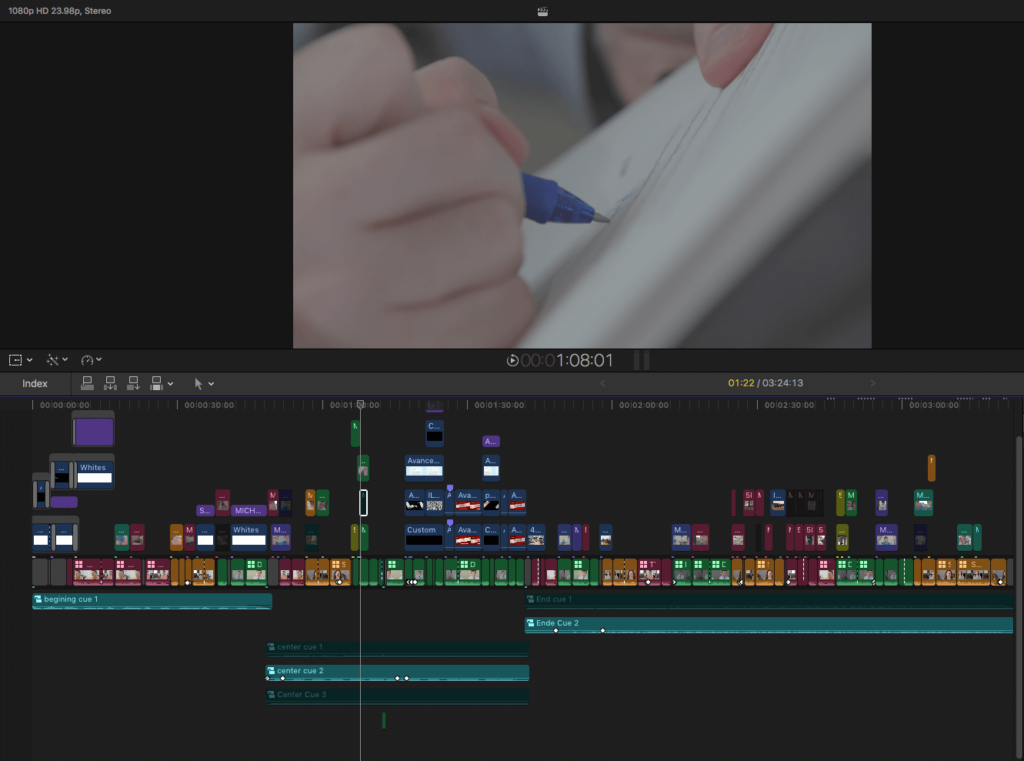In our last Making the Cut post, we talked about logging and preparing our media for editing. Now it’s time for the much anticipated, next step in the post production process: putting together the spine of our story, or, a “radio edit”. This step is called a radio edit, because, you guessed it, we mostly focus on the audio of the story first. In this step of the process, the most important part is listening to the interview. Favoriting the pieces that will help shape the story we are trying to tell. At both our Galileo Boston post production house and our Saratoga Springs / Albany, NY post production house, we use Final Cut Pro X which has an excellent organizational mechanism that is perfect for the first steps of the editing process.

Organization of clips helps keep things in order and favoriting selects for the story provides for easy recall later on in the post production editing process.
The editor of the project will go through the interview and favorite aspects of the interview that are important to the story the subject is telling. We also add a brief description to each favorited selection, acting as an index so that we can better search for specific pieces of the interview. This makes the next part of the process much easier and more organized.

An idea of what a post production editing timeline might look like. It includes the main radio edit with additional footage that compliments the story placed above it. Color coding can also help with organization.
Using the favorites, we assemble our selects in the timeline of Final Cut X, where you can cut and organize footage. We often end up with a first cut that is much much longer than the final end product we want to assemble. Once we get the feel of how the story is progressing in this longer edit, we can cut out parts that might be somewhat repetitive, or parts of the story that don’t seem to fit into the larger narrative. If the cuts don’t line up well (what we call a jump cut) we don’t pay attention to that for the moment. That comes in the next step!


